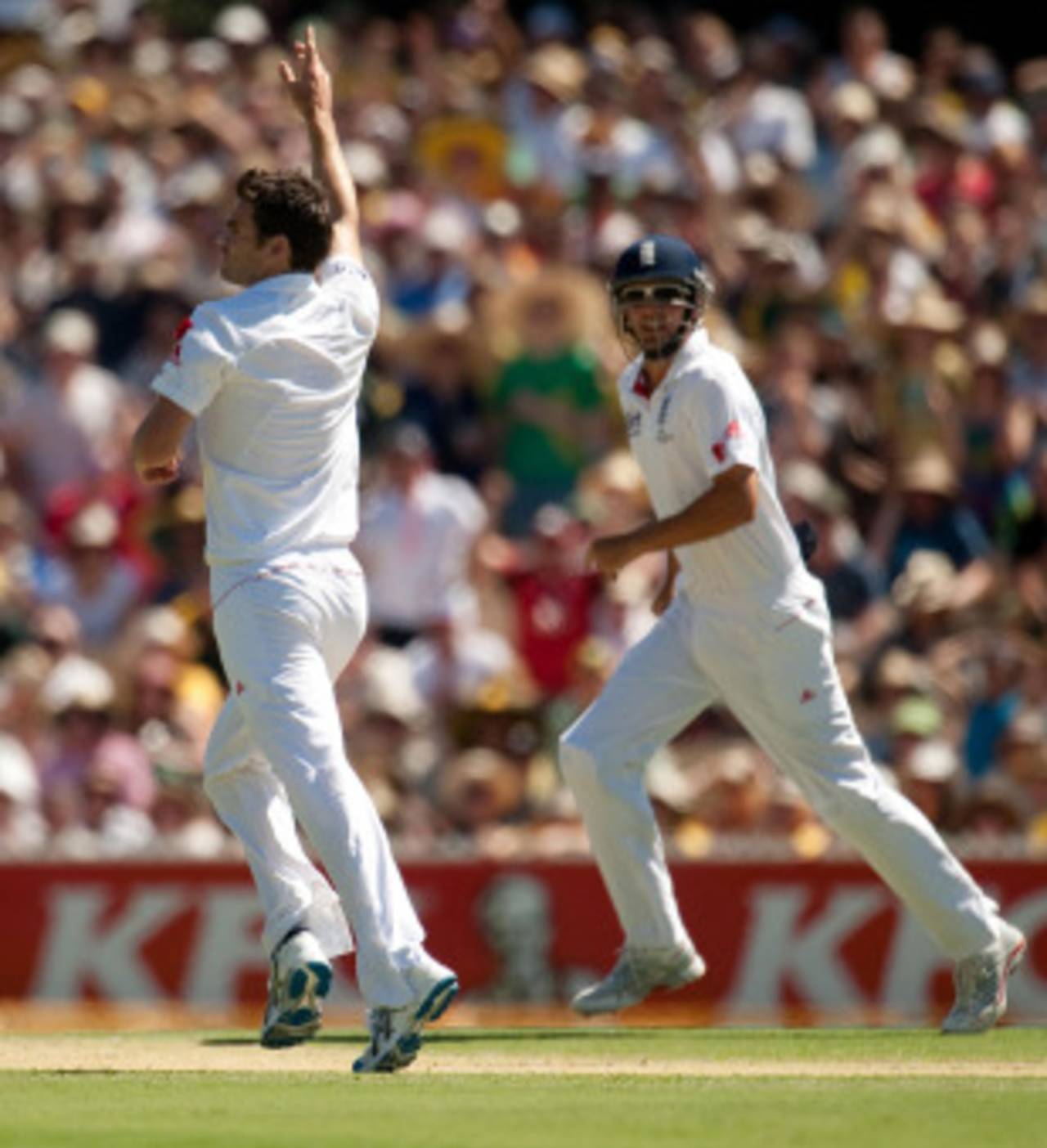Tyson, Hadlee, Holding … Jimmy?
Jimmy Anderson’s second delivery to Michael Clarke today swung 11 centimetres, the mere width of a golf hole
Christian Ryan
25-Feb-2013

James Anderson took 4 for 51 to lay rest to some horrific memories of Australia • PA Photos
Jimmy Anderson’s second delivery to Michael Clarke today swung 11 centimetres, the mere width of a golf hole. Two centimetres more and the ball would have missed the bat’s edge. Four centimetres fewer and it would have kissed the bat’s middle. But it didn’t, and it wouldn’t, and for Clarke what happened next did not bear thinking about. He got a snick to second slip.
Centimetres and if-onlys – that’s cricket. No one so far has satisfactorily explained how Anderson could bowl so thrillingly in Brisbane yet be so feebly rewarded. His old coach Duncan Fletcher took a stab in his Guardian column, calling it a “big mystery” that makes “you wonder”. “I have seen this before as a coach,” Fletcher went on wise-soundingly … And then changed the subject. We should have expected nothing much more. It is why ex-coach Fletcher’s now writing, not doing. Besides, some things are beyond explaining.
Today Anderson’s one ball at Ricky Ponting basically bounced and straightened. It was the perfect hello to an old dog who has picked up many new tricks over the years but found one bad habit impossible to shed: his anxious, jabbing beginnings. This ball from Anderson was not full or short. Ponting could comfortably stride neither forward nor back. The result was a sort of no-man’s-land hover – and Ponting’s fourth golden duck, three of them caught behind the wicket, in the space of 24 months.
That not-one-thing-or-the-other length caused most of this morning’s bother in Adelaide. If a ball is not quite full yet not what you’d call short, then what the heck is it and how do you play it? To this, Anderson added a pinch of outswing. He let go the occasional hooping inswinger. The more occasional it was, the more unnerving the doubt it unscrewed in the batsman’s mind. These were old and simple methods, as matter-of-factly applied as the dollop of sunscreen on Anderson’s nose. Then when the swing went out of the air he called on his powers of creativity.
Shane Watson, he noticed, had been driving too uppishly for comfort at balls too far from his body. So Anderson came back from lunch and fed the stroke. He fed it again, then fed it some more. Three times was enough. Watson, on 51, holed out at gully.
Four years ago, Anderson landed down under and was dispatched straight to the stratosphere. One for 195 he took. The red Kookaburra ball seemed not merely alien in his possession; it was as if some kind of homing beacon had been implanted inside it, propelling the ball from Anderson’s scrawny white hand to the centre of Ponting’s broad bat. Generally speaking, when a visiting fast bowler is broken on first contact with Australian conditions, he stays broken ever after. The mystique is gone, the menace goes wherever the mystique went, and the ways and means that work for him elsewhere somehow fall ever flatter here. Three exceptions come to mind: Frank Tyson (1 for 160 at the Gabba; Ashes superhero two months later), Richard Hadlee (0 for 104 in Melbourne; 77 wickets at 16 after that) and Michael Holding (10 wickets after five Australian Tests; 53 in the following nine).
Today Jimmy Anderson went some distance towards joining that distinguished trio. Had his four wickets been six he’d have gone even further. For he could have had Mike Hussey caught in the slips for 10, if only the ball had sailed two centimetres further. Four centimetres lower and he’d have had Watson lbw for 7. If only …
Christian Ryan is a writer based in Melbourne. He is the author of Golden Boy: Kim Hughes and the Bad Old Days of Australian Cricket and, most recently Australia: Story of a Cricket Country